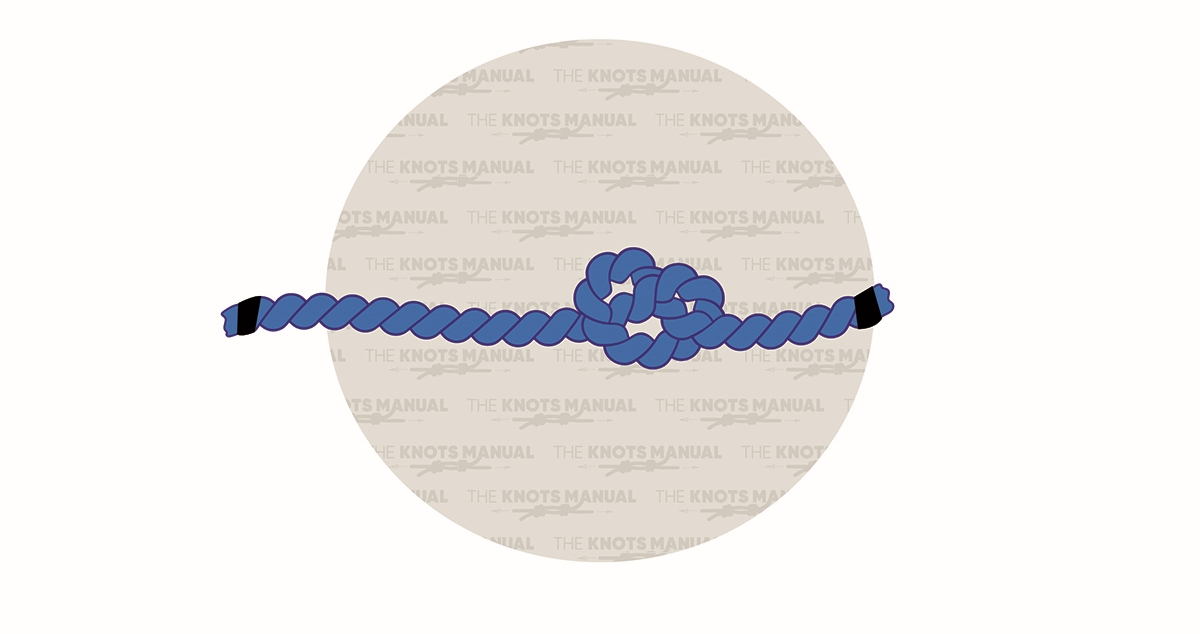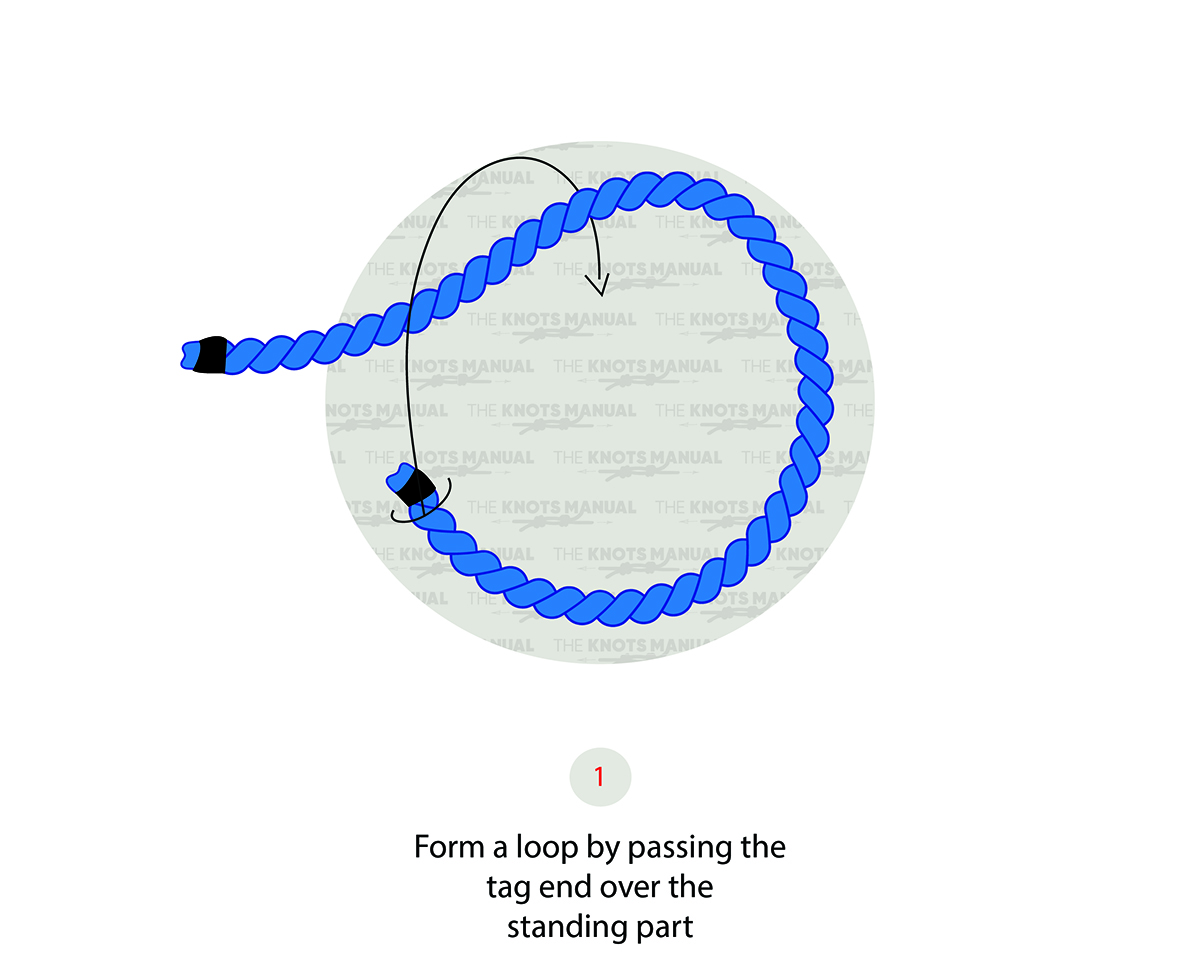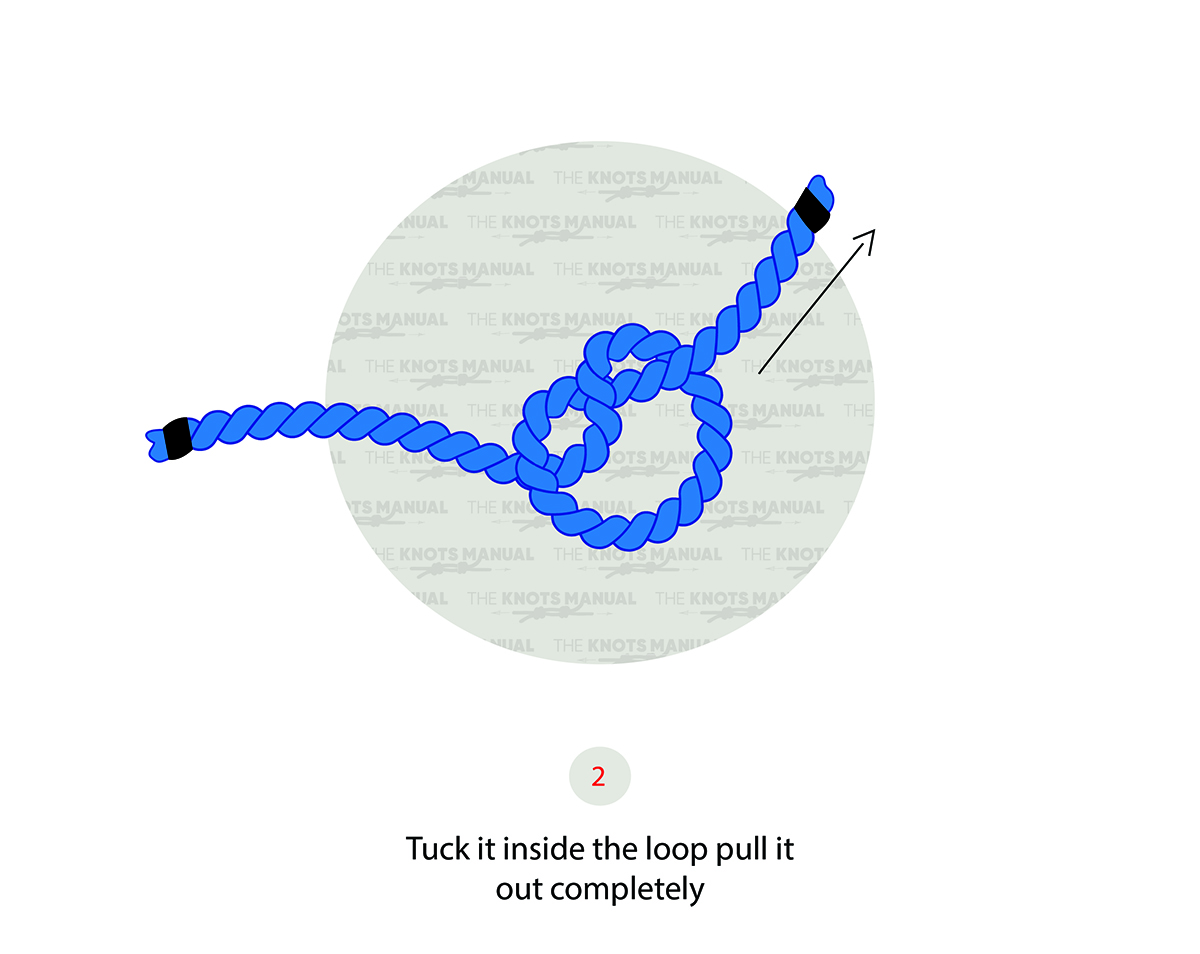The basic overhand knot is one of the simplest knots you’ll ever learn or use. Many complex knots get their beginnings from the overhand knot. They mainly work as stopper knots to prevent fraying and to make ropes more secure.
The overhand knot is also important in history and mathematics. It is in mathematical knot theory and is the basis for heraldry designs. Even hagfishes use overhand knots to catch their prey and escape dangerous situations.
There are many knots like the overhand knot, including:
- The double overhand knot
- The half knot
- The half hitch
- The slipknot
- The fisherman’s knot
- The square knot
Follow the simple directions below to learn how to tie an overhand knot.
What Is An Overhand Knot?

An overhand knot is a foundation knot, forming the beginning of other, more complex knots. It is one of the easiest knots to tie and often one of the first knots beginners learn to tie.
Sometimes, you can use an overhand knot as a stopper knot by tying it at the end of a rope. A simple overhand knot can prevent a rope from unraveling or fraying.
Overhand knots are helpful because they are secure. You can tie them around another knot or object without worrying they will come undone. They bind tightly, making them permanent.
The overhand knot has some drawbacks, too. They are jamming and almost impossible to untie. They significantly decrease the strength of your rope, as well.
How To Tie An Overhand Knot

Tying an overhand knot doesn’t have to be difficult; just follow these three simple steps:
Step 1:

Form a loop by passing the rope’s working end over the standing part.
Step 2:

Thread the working end through the loop you just created, pulling it through completely
Step 3:

Pull the working and standing ends simultaneously to tighten the knot
* You can also make an overhand on a bight. Create a bight in the rope and stick your hand through the hole. Grab the working end of the rope and pull it through the loop. *
Uses Of The Overhand Knot
As the basis for many other knots, the overhand knot has a wide variety of uses.
As A Stopper Knot
The most common use of the overhand knot is as a stopper knot to keep ropes and other knots secure.
Overhand stoppers knots are suitable for a variety of situations:
- Sewing
- Preventing fraying and unraveling
- For making jewelry, like necklaces and bracelets
For Beginning Other Knots
The overhand knot is the beginning of many more complex knots, like:
- The overhand loop knot
- The fisherman’s knot
- The square knot
- The arbor knot
- The Hangman’s noose
- The Angler’s loop
- The Reef knot
- The Water knot
Heraldry
Heraldry refers to the studying, designing, and displaying of armorial bearings. Armory is the best-known branch, and you’ve likely seen heraldry designs on coats of armor.
The Earls of Stafford first used the overhand knot as a heraldic badge. Later in history, the overhand knot became a symbol of Staffordshire. Rather than going by the name “overhand knot,” the knot is known as the “Stafford knot.”
Knot Theory
Overhand knots have their place in mathematical knot theory. Knot theory is the study of three-dimensional closed curves. It studies how these curves may deform without one curve cutting through another.
In knot theory, the overhand knot is known as the “trefoil knot.” The trefoil knot is the simplest possible kind of true knot. They only have three crossings, which is the smallest number of crossings of any knot. All others have at least four.
Other Uses Of The Overhand Knot
The overhand knot is simple and versatile so that you can use it for various other things, including:
- Creating no-sew fleece blankets
- Keeping knots grouped in a braid
- As a safety knot for climbers
Hagfishes — The Overhand Knot In Nature
Hagfishes are long, tube-like fish that resemble eels and snakes. Their primary defense mechanism is tying themselves into an overhand knot. After tying themselves up, they secrete a slick mucus.
The fish distributes the slime over its entire body using an overhand knot. It slides its body so the “knot” works from head to tail, making its whole body slick with mucus.
Hagfishes tie themselves into a reverse knot when hunting. They snatch their prey and use the knot in their body to give them leverage to rip off pieces of flesh. They Start with the knot near their tail. Then, they push it upward to their head to provide themselves with an advantage.
Knots Similar To The Overhand Knot
Double Overhand Knot: These knots are overhand knots with an extra pass. They are larger than single overhand knots and more challenging to untie. Like the overhand knot, they are sometimes used as a stopper knot. More often, you’ll use a double overhand knot to tie off loose ends on your rope.
Half Knot: This is a more complex version of the overhand knot. You use both ends of the rope to tie a knot around an object. You’ll create a half knot as the beginning of a reef or square knot. Half knots are common for tying shoelaces or bows around a package. You can also use them for reefing and furling.
Half Hitch: A more complex version of the overhand knot is the half hitch. One end of the rope passes around an object and is then secured to its standing part.
Slipknot: A slipknot ties the same as an overhand knot. Yet, you pull a loop through the first loop rather than the rope’s working end. Slipknots easily untie by pulling on the standing end.
Fisherman’s Knot: These knots are a type of bend, meaning they join two ropes. They comprise two overhand knots. Each overhand knot ties around the standing end of the other knot. Fishermen are the ones that most often use these knots. They slip when made with slippery materials. Yet, they are jamming when made with the proper materials.
Square knot: These knots comprise two overhand knots that turn in opposite directions. Square knots become flat when you pull on the ends to tighten the knot. They are helpful for tying packages and first aid.
FAQs
How Much Does An Overhand Knot Weaken A Rope?
Knots considerably reduce the breaking strength of rope — some more than others. A typical knot reduces the breaking strength by about 20%. A simple overhand knot reduces the breaking strength by an astounding 50%.
How Secure Is An Overhand Knot?
Overhand knots are very secure and are one of the only knots considered to be permanent. They jam badly when tied tightly, making them nearly impossible to untie. Still, you shouldn’t use them with critical loads.




